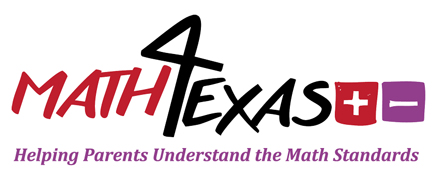T.i.P.S.
-
 This standard focuses on additive (y = x + b) and multiplicative (y = kx) patterns, and the representation of those patterns using multiple representations including descriptions, tables, graphs and equations. Students will be using a variety of forms to solidify their understanding of numerical patterns, identifying the process for each type of pattern as well.The verbal descriptions will help the student explain their thinking and justify it; tables help organize the information to understand the pattern; graphs provide a visual representation of the pattern; and equations demonstrate how we can write a “rule” for that pattern. Be cautious as students may incorrectly identify the pattern that is being used if they do not focus on the given situation.Students may also get confused on how to read the ordered pairs on the graph, and misinterpret the rule. The more you can combine the different representations, the better outcome and deeper understanding students will get.
This standard focuses on additive (y = x + b) and multiplicative (y = kx) patterns, and the representation of those patterns using multiple representations including descriptions, tables, graphs and equations. Students will be using a variety of forms to solidify their understanding of numerical patterns, identifying the process for each type of pattern as well.The verbal descriptions will help the student explain their thinking and justify it; tables help organize the information to understand the pattern; graphs provide a visual representation of the pattern; and equations demonstrate how we can write a “rule” for that pattern. Be cautious as students may incorrectly identify the pattern that is being used if they do not focus on the given situation.Students may also get confused on how to read the ordered pairs on the graph, and misinterpret the rule. The more you can combine the different representations, the better outcome and deeper understanding students will get.
Example
-
Joshua goes to the candy store to buy gum. Each piece of gum that he buys costs $0.35. Construct a table that shows the price Joshua would pay for 5 pieces, 10 pieces, 15 pieces, and 20 pieces of gum. Let n represent the number of pieces and c represent the cost of those pieces. Write an equation to represent this relationship. Justify your thinking.
Digital Tools
-
Click on the following links for interactive games.
Resources
-
Click on the following links for more information.
TEKS
-
6.6 Expressions, equations, and relationships. The student applies mathematical process standards to use multiple representations to describe algebraic relationships. The student is expected to:
(C) represent a given situation using verbal descriptions, tables, graphs, and equations in the form y = kx or y = x + b





 Click
Click 

